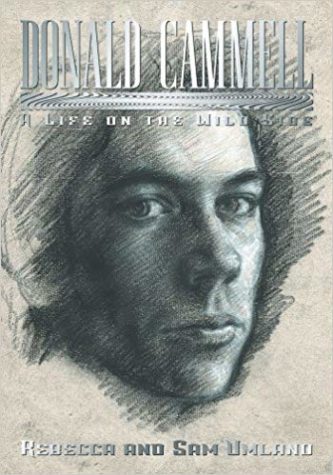 By REBECCA UMLAND, SAM UMLAND (FAB Press; 2006)
By REBECCA UMLAND, SAM UMLAND (FAB Press; 2006)
The first and likely only biography we’ll ever see of the late Donald Cammell. The British Cammell (1934-1996) was a remarkable filmmaker, perhaps even a genius, although his filmography is disappointingly scant. His best known film is the legendary PERFORMANCE from 1971, his directorial debut (with Nicolas Roeg). It should have marked the start of an auspicious filmmaking career, yet Cammell completed just three more films before committing suicide in 1996. Of those films, only 1987’s WHITE OF THE EYE came close to recapturing the elusive brilliance of PERFORMANCE.
Biographers Rebecca and Sam Umland have done an admirably exhaustive job recounting Cammell’s stormy life. Their thesis, that Cammell was from the start a self-sabotaging individual who engineered his own personal and professional downfall, is convincingly laid out. I’d have preferred a livelier treatment more in line with Cammell’s flamboyant personality and films, as the book is a tad academic for my tastes. The Umlands evidently feel nobody will believe their conclusions, as they quote quite extensively from various experts to support their conclusions—note the lengthy final chapter on suicide, apparently included to make absolutely sure we know the authors did their homework on the subject.
Still, the book is readable. It certainly has a fascinating subject whose contradictory mood swings and sexual exploits are compelling, to say the least. Although he came of age during WWII in Edinburgh (which the authors compare to the events of John Boorman’s autobiographical film HOPE AND GLORY), Cammell was very much a product of the Swinging Sixties, which was when he became involved in filmmaking. Along the way he came into contact with counterculture icons like Roman Polanski, Kenneth Anger, William Burroughs and Mick Jagger (who apparently modeled much of his stage antics on Cammell), and in the process abandoned a promising career as a painter. The authors mark that abandonment as a sign of Cammell’s perversely self-destructive nature, which (they argue) nearly derailed his film career on several occasions.
The making of the Mick Jagger headlined PERFORMANCE was decidedly stormy, with Cammell taking over a year to complete the editing (so claim the authors, contradicting the more popular explanation of studio interference). From there Cammell labored on a short film called THE ARGUMENT (which remained uncompleted until after his death) and a myriad of tantalizing projects that for various reasons never got off the ground. The authors are nothing if not thorough in covering the many never-made Cammell films, such as the bizarre Zalman King scripted science fiction project HOT!, the thriller EL PASO, the doomed-from-the-start Marlon Brando vehicle JERICHO, and THREE THOUSAND, an early version of PRETTY WOMAN to which Cammell was briefly attached.
Of those films that did get made, the Dean Koontz adapted science fiction/horror film DEMON SEED (1977) was a moderate success, though compromised somewhat by executive interference, while WHITE OF THE EYE suffered from poor distribution, and WILD SIDE (1995) was recut against Cammell’s wishes—a fact that may have contributed to his suicide.
The Umlands have much to say about that suicide, clearing up many of the false reports that have persisted about it (such as the claim that Cammell lived for an hour after shooting himself). Other revelations include the news that Cammell had a son in 1959 whom he ignored throughout his life, and that Cammell’s child bride China (who he began courting when she was just 14 years old) broke up with him shortly before his demise.
DONALD CAMMELL: A LIFE ON THE WILD SIDE must be counted as the premiere Donald Cammell resource, going far beyond all previous ones (such as the 1998 documentary DONALD CAMMELL: THE ULTIMATE PERFORMANCE) in thoroughness and accuracy. It could be a tad juicier, however!
